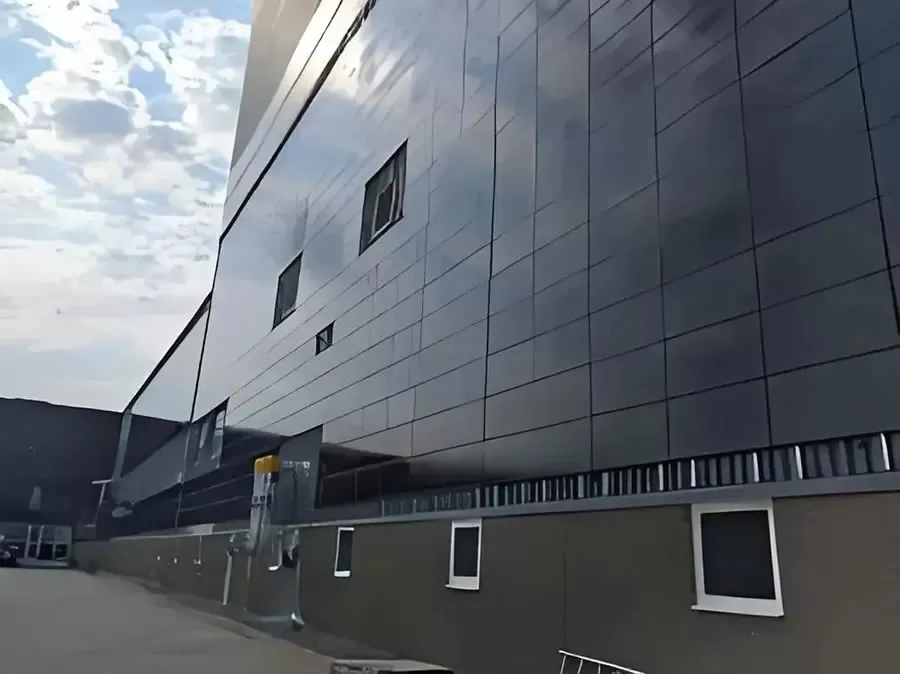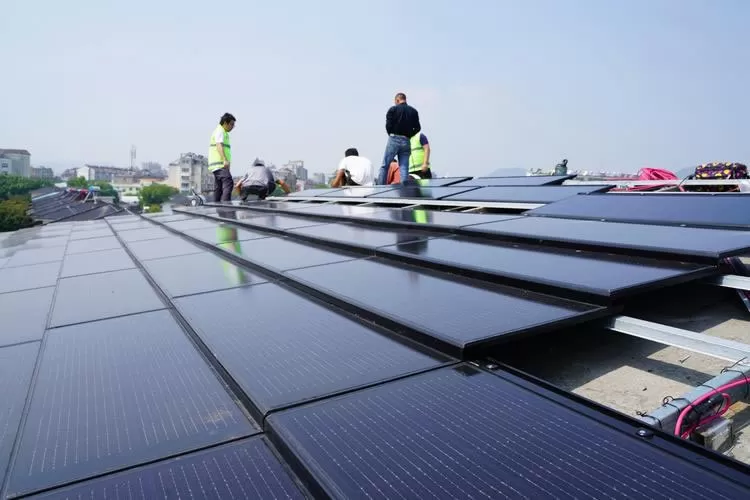
Driven by the global carbon neutrality target, the construction industry is accelerating its transition to green and low-carbon, and green building has become the future development direction of the construction industry. Among them, Building Integrated Photovoltaic (BIPV), as an innovative program combining construction and new energy, is gradually becoming an industry hotspot. Although traditional photovoltaic panels can generate electricity, they are difficult to integrate with the aesthetics of architectural design due to their bulky appearance and poor light transmittance. Especially with the application of light-transmitting photovoltaic glass, light-transmitting photovoltaic glass, as an important part of BIPV, not only possesses the function of generating electricity, but also has the advantages of light harvesting, heat insulation, and aesthetics, which endows the modern buildings with a higher environmental value and a sense of science and technology.
Technical Analysis of Light-transmitting Photovoltaic Glass
Light-transmitting photovoltaic glass is the core material of BIPV curtain wall, and its technical principle lies in embedding photovoltaic cells into double-layered tempered glass through a special process and precisely controlling the light transmittance (usually 10%~50%). This material can not only filter ultraviolet rays, reduce heat radiation, but also use visible light to generate electricity, truly realizing the “multi-purpose”. Its core technologies include:
Double-glass module technology
Ultra-thin crystalline silicon cells or thin-film cells (e.g. CdTe) are laser-etched to form a micron-sized light-transmitting gap, realizing a balance between power generation and light transmission.
Customized light transmission
Adapt the cell density to the needs of the building, e.g. 30% transmittance for office areas to ensure indoor brightness, and up to 50% transmittance for corridors.
Aesthetic Adaptability
Supporting color and texture customization, it can simulate the effect of stone, wood grain, etc., and even combine with color film technology to create an artistic curtain wall.

Case Study: Enhancing Building Performance with BIPV Curtain Walls
Case 1: Apple Park, Apple Headquarters
Apple's headquarters adopts a light-transmitting photovoltaic glass curtain wall with a light transmission rate of 40%. The façade of the building presents a minimalist metallic texture during the day, while allowing natural light to pour evenly into the interior, reducing the energy consumption of artificial lighting. According to statistics, the curtain wall generates 17 megawatts of electricity annually, which is equivalent to meeting 30% of the park's electricity demand, while the indoor air-conditioning load is reduced by 25% due to the optimized thermal insulation performance.
Case 2: Shanghai Center Tower
As the tallest building in China, Shanghai Center adopts photovoltaic glass with 20% light transmittance on the sightseeing floor. The curtain wall reduces glare through nano-coating technology, while blocking 60% of solar heat, keeping the indoor temperature stable at around 26℃. Its wavy curved design not only enhances the aesthetics of the building, but also increases the efficiency of photovoltaic power generation to 18% through angle optimization.
Case 3: EDITT Eco-Tower in Singapore
In Singapore, where the temperature and humidity are high, the light-transmitting photovoltaic curtain wall of EDITT building adopts adjustable sunshade design. The glass has built-in dynamic louvers that automatically adjust the angle according to the intensity of sunlight, ensuring lighting and maximizing power generation efficiency. Project data shows that the overall energy consumption of the building was reduced by 40%, and the building was awarded the Singapore Green Building Platinum Certification.
Three core values of BIPV curtain wall
Energy self-sufficiency and low carbon emission reduction
Each square meter of light-transmitting photovoltaic glass can generate 100-150 degrees of electricity annually, and the annual power generation of a 50,000 square meter building can cover 30%-50% of its own electricity demand, reducing carbon emissions by about 2,000 tons.
Comprehensive improvement of building performance
Heat insulation and energy saving: Compared with ordinary glass, light-transmitting photovoltaic glass can block 50%-70% of heat radiation and reduce air conditioning load;
Natural lighting: Light-transmitting design reduces reliance on artificial lighting and meets the requirements of the WELL Building Standard for a healthy light environment;
Safety and durability: wind pressure and burst resistance are superior to traditional curtain walls, with a lifespan of more than 25 years.
Design aesthetics and asset appreciation
BIPV curtain wall breaks the stereotype of traditional photovoltaic, and through modular splicing, curved surface modeling and other designs, it gives the building a unique aesthetic sense of science and technology. For example, a commercial complex in Hangzhou adopts gradient translucent PV glass, presenting an ink painting effect during the day and forming a dynamic art screen by combining LED lights at night, with a 15% rental premium for the project.
BIPV and the Future Trend of Green Buildings
According to the International Energy Agency's forecast, by 2030, the size of the global BIPV market will exceed 300 billion dollars. At the policy level, China and the EU have introduced subsidy policies to encourage the mandatory installation of PV systems in new buildings. On the technology iteration, the breakthrough of calcium titanium ore battery is expected to reduce the cost of light-transmitting photovoltaic glass by 30% and increase the power generation efficiency to more than 25%.
Designers and developers can integrate in the early stage, that is, incorporate BIPV system planning in the design stage of the building scheme; and use it in multi-disciplinary synergy to optimize the structural and electrical design in conjunction with photovoltaic companies and curtain wall manufacturers; and carry out a full life-cycle assessment to measure the payback cycle through the power generation revenue and energy saving and consumption reduction data, with a cycle of 8-12 years under normal conditions.
Conclusion
BIPV photovoltaic glass is leading the development trend of green buildings, transforming buildings from “energy-consuming bodies” to “energy-producing bodies”, and realizing energy-saving and emission reduction goals while enhancing the value of buildings. If you are looking for an efficient, environmentally friendly and aesthetically pleasing building energy solution, BIPV is undoubtedly the ideal choice for future building design!
If you want to know more about BIPV products and solutions, please visit our website or contact us to explore the infinite possibilities of green buildings!









One step to find us,we will respond within 24 hours.
More Contact Details
008613738639386
[email protected]